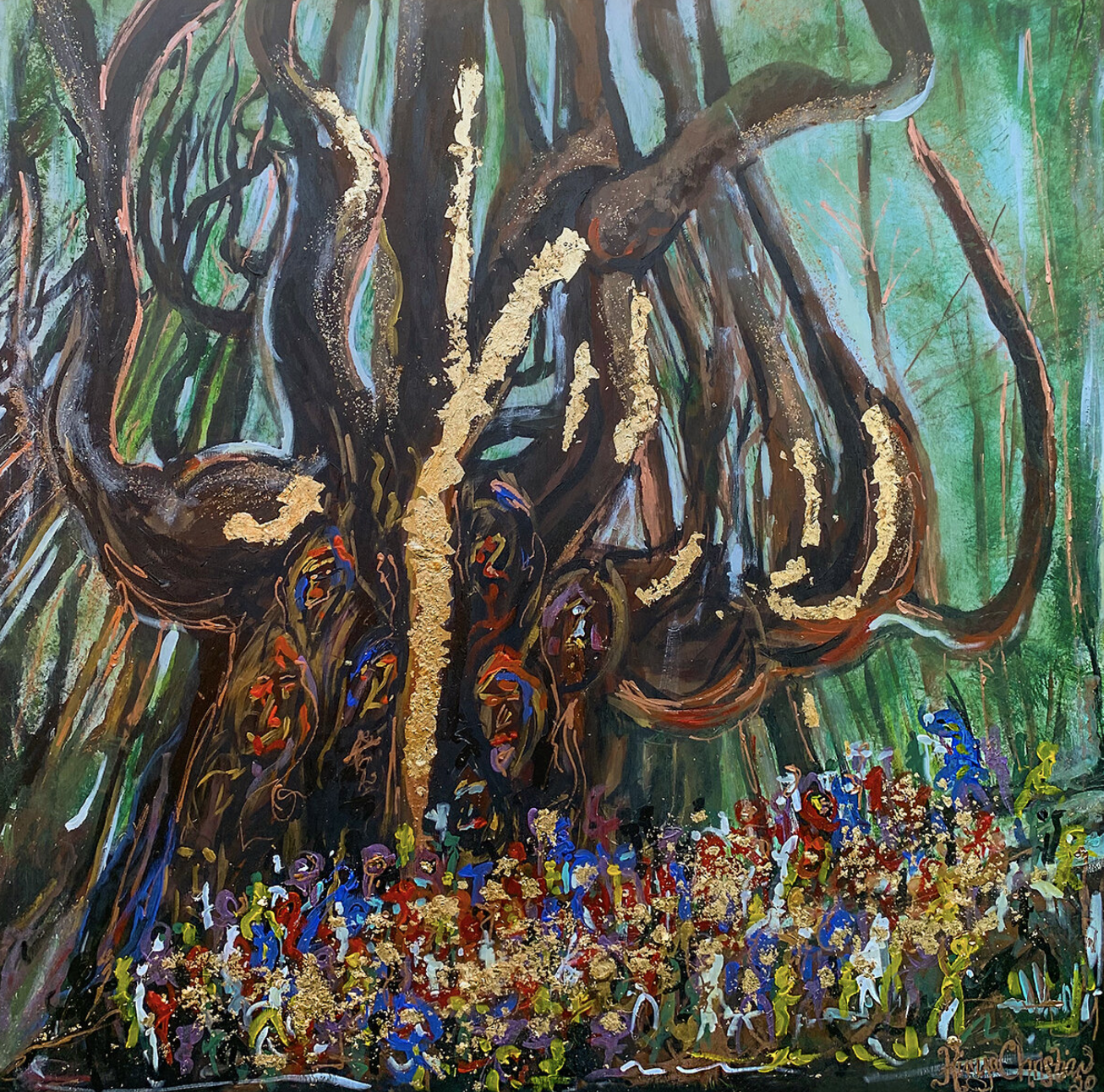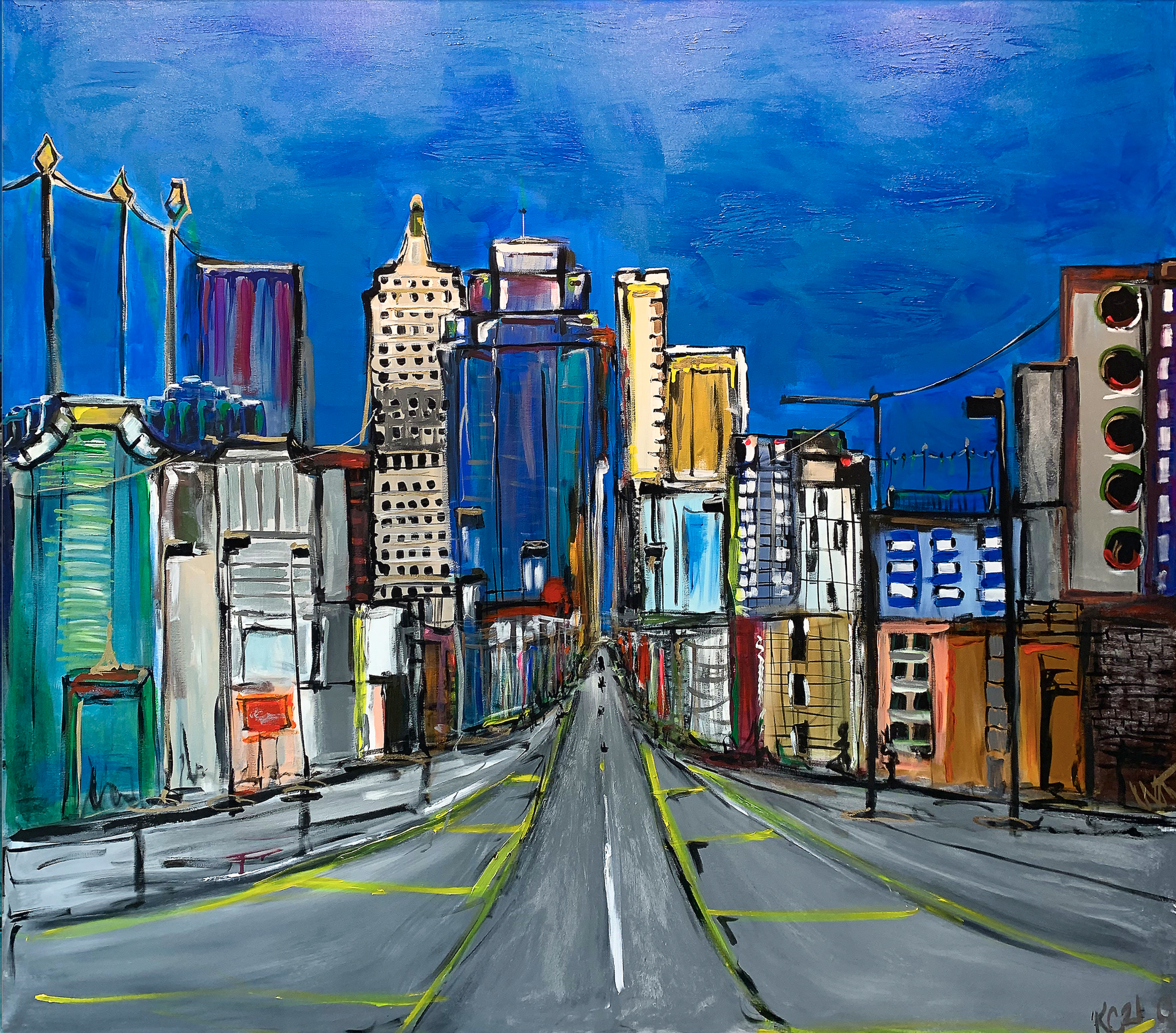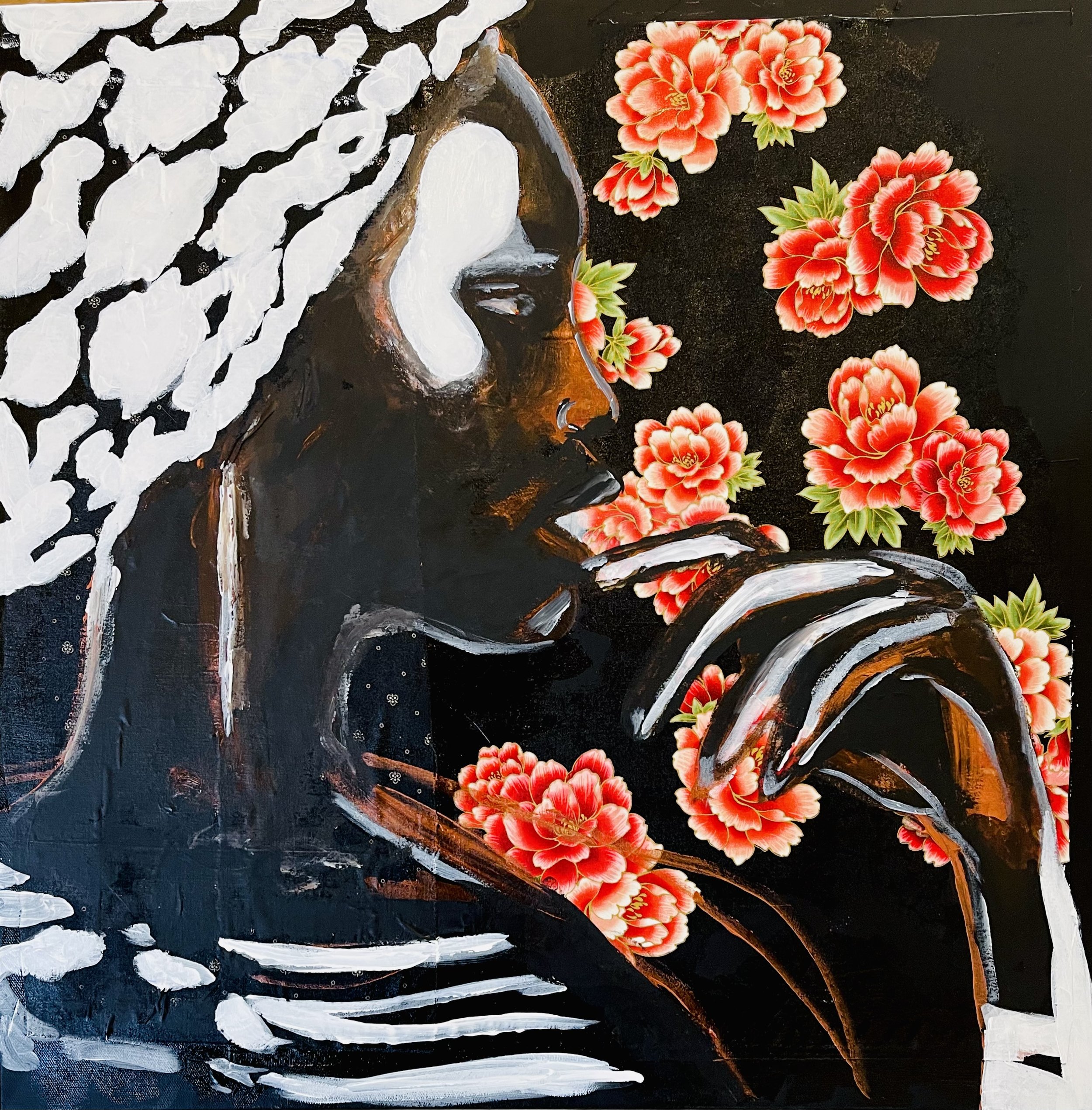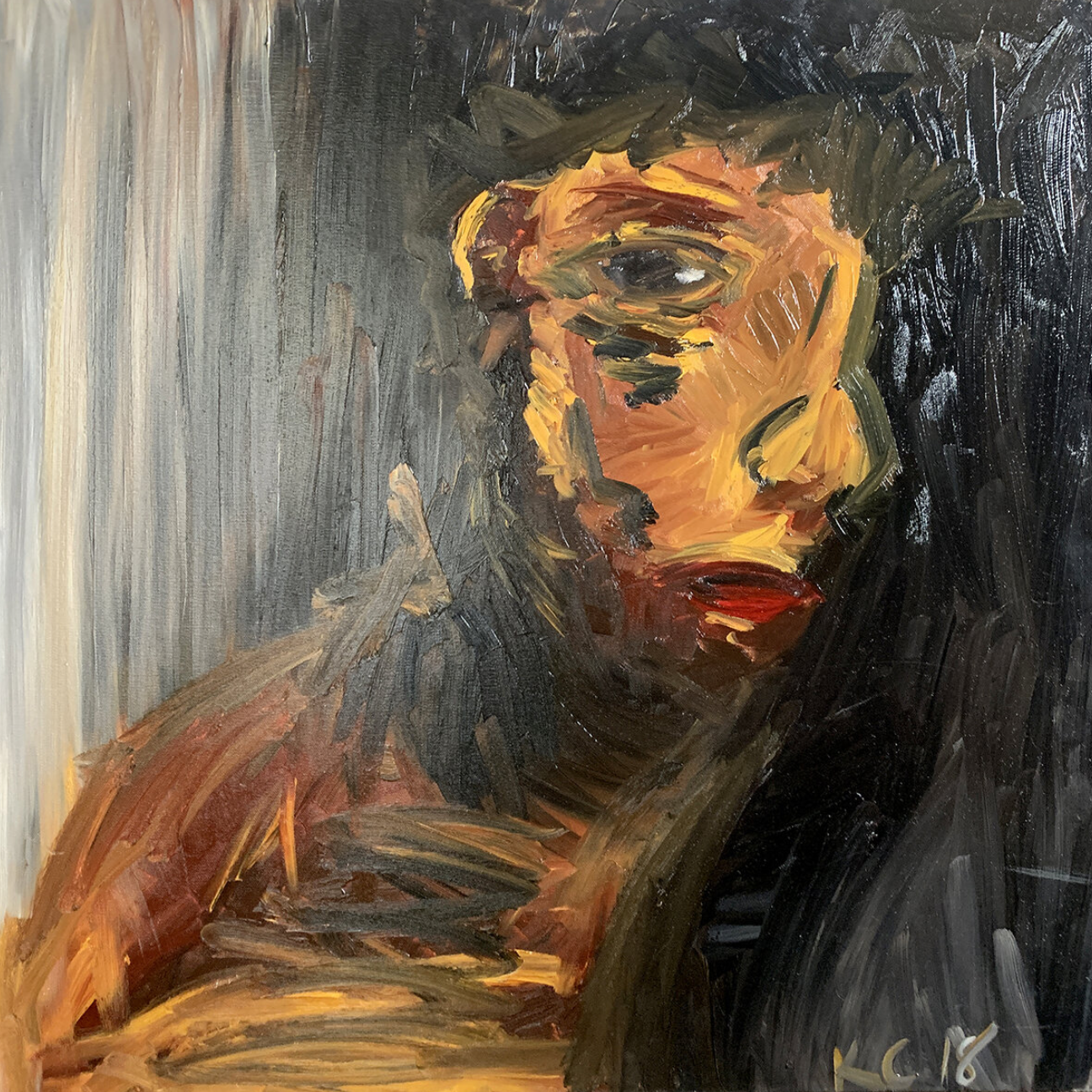About the art you see
ABOUT THE ART
PARADISE TREE
This work was part of a 4’ x 8’ original work of art designed to foster connection and provide encouragement throughout the Northwest Arkansas community conceived by Crystal Bridges, helping those especially vulnerable to the negative effects of social isolation. In partnership with local hospitals and assisted living facilities, I was one of 9 selected artists to create an image in response to the word “together” to be displayed at a safe distance at partnered facilities. “Paradise Tree” was inspired by my hope for the future as described at Isaiah 65:22: “They will not build for someone else to inhabit, nor will they plant for others to eat. For the days of my people will be like the days of a tree, and the work of their hands my chosen ones will enjoy to the full.”
MY CITY
This work is literally My city, in fact, a few of my favorite cities displayed as one. And it’s rewarding to discover other people often find their city in it too. Do you see yours?
NOLA
New Orleans. Nawwwlenz. However you pronounce it, this city is alive with history and culture—with all due respect to the Africans and their progeny who are represented in the richness and grit that give it soul.
GIVE ME MY FLOWERS
Give me my flowers. They are not a gift, some sort of consolation, or reparation. They are what is due, they belonged to me—and I’m not asking, I’m telling.
SOUTHERN TREES
“Southern trees bear a strange fruit
Blood on the leaves and blood at the root Black body swinging in the Southern breeze Strange fruit hanging from the poplar trees
Pastoral scene of the gallant South
The bulging eyes and the twisted mouth Scent of magnolia, sweet and fresh
And the sudden smell of burning flesh!
Here is a fruit for the crows to pluck
For the rain to gather, for the wind to suck For the sun to rot, for a tree to drop,
Here is a strange and bitter crop.”
“Strange Fruit” is a song recorded by Billie Holiday in 1939, written by Abel Meeropol and published in 1937. It protests the lynching of Black Americans, with lyrics that compare the victims to the fruit of trees.
Such lynchings had reached a peak in the Southern United States at the turn of the 20th century, and the great majority of victims were black. The song has been called “a declaration of war” and “the beginning of the civil rights movement.”
Billie was deeply moved by the lyrics — not only because she was a Black American but also because the song reminded her of her father, who died at 39 from a fatal lung disorder, after being turned away from a hospital because he was a Black man. “It reminds me of how Pop died,” she said of the song in her autobiography. “But I have to keep singing it, not only because people ask for it, but because 20 years after Pop died, the things that killed him are still happening in the South.”
While civil rights activists and Black America embraced “Strange Fruit,” the nightclub scene, which was primarily composed of white patrons, had mixed reactions. At witnessing Holiday’s performance, audience members would applaud until their hands hurt, while those less sympathetic would bitterly walk out the door.
The history is undeniable—just like racism and bigotry.
I have discovered at the root of bigotry is fear. Ignorance. I was afraid and ignorant about Spanish moss. I thought it was a parasite. (I know, right?!) Now I find its part of some of my favorite southern landscapes. I also imagine the horrors that existed in those same southern landscapes. What if we were able to accept the horror with the beauty, and learn from each, and then treat each other with love, kindness, and empathy? Have you ever allowed your perception and/or accepted definitions block you from your humanity?
TIRED.
Self-explanatory. This painting was completed during a time when I feeling completely overwhelmed with the fallout from a divorce, dealing with microagressions… Life.






